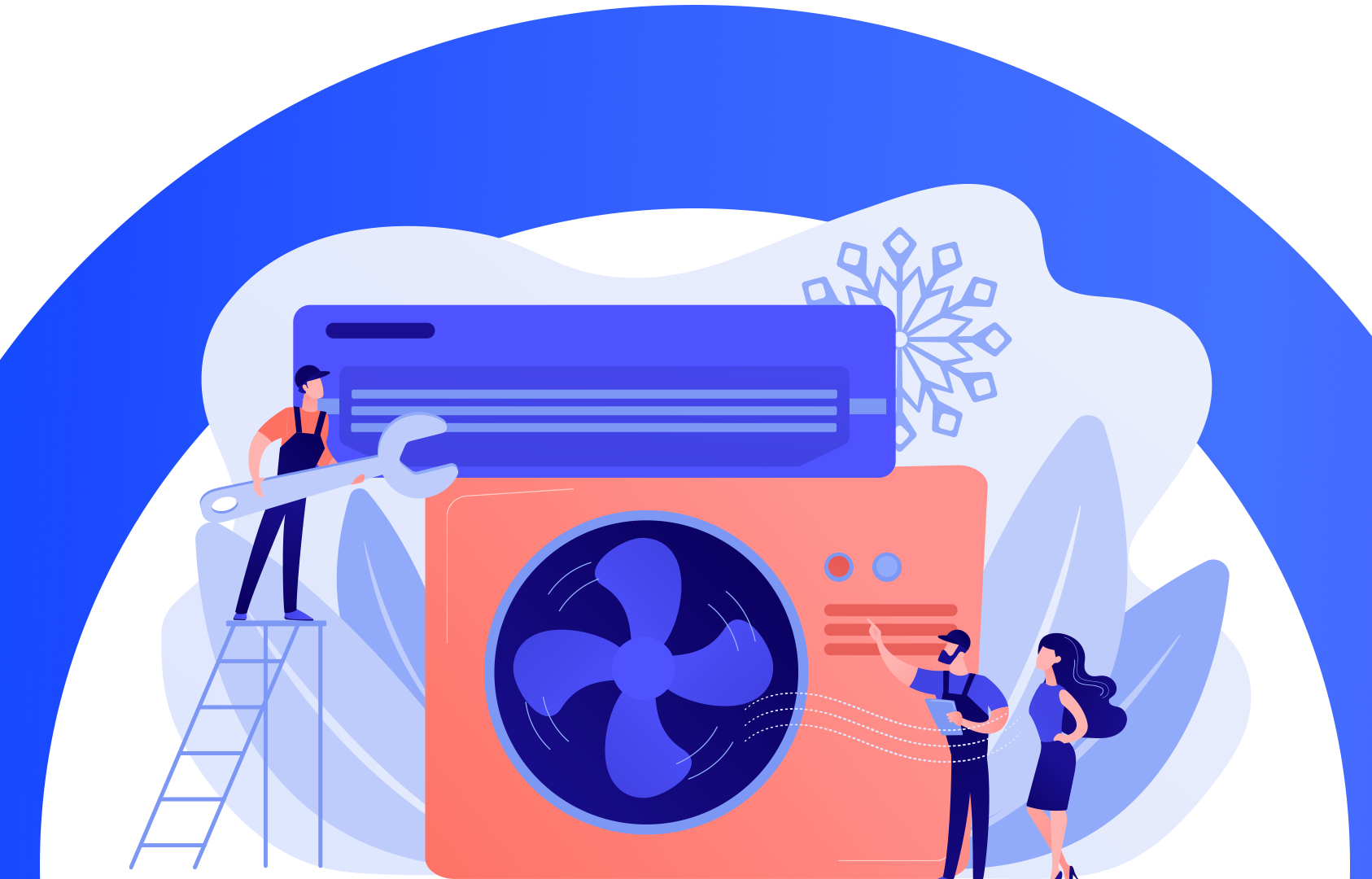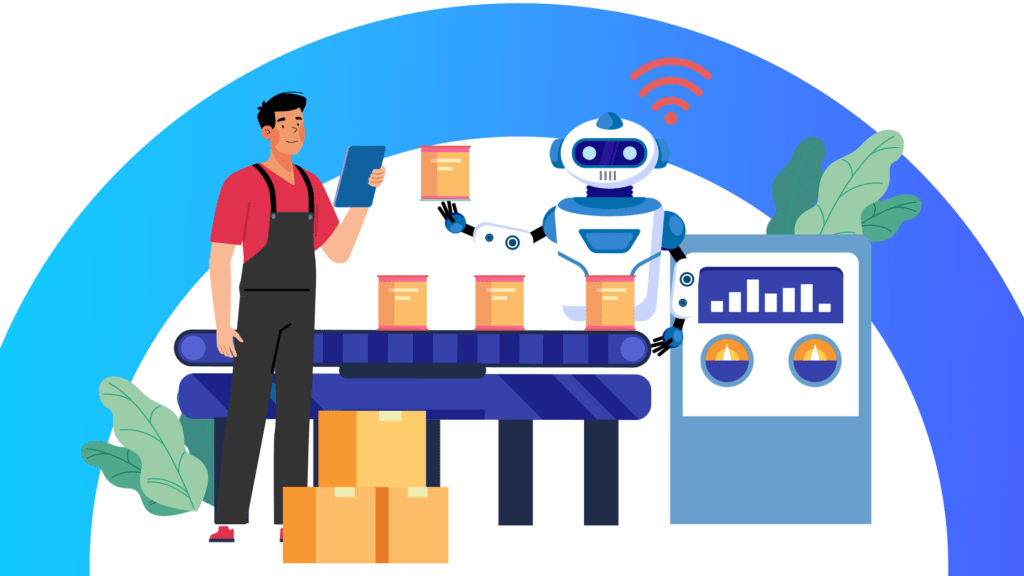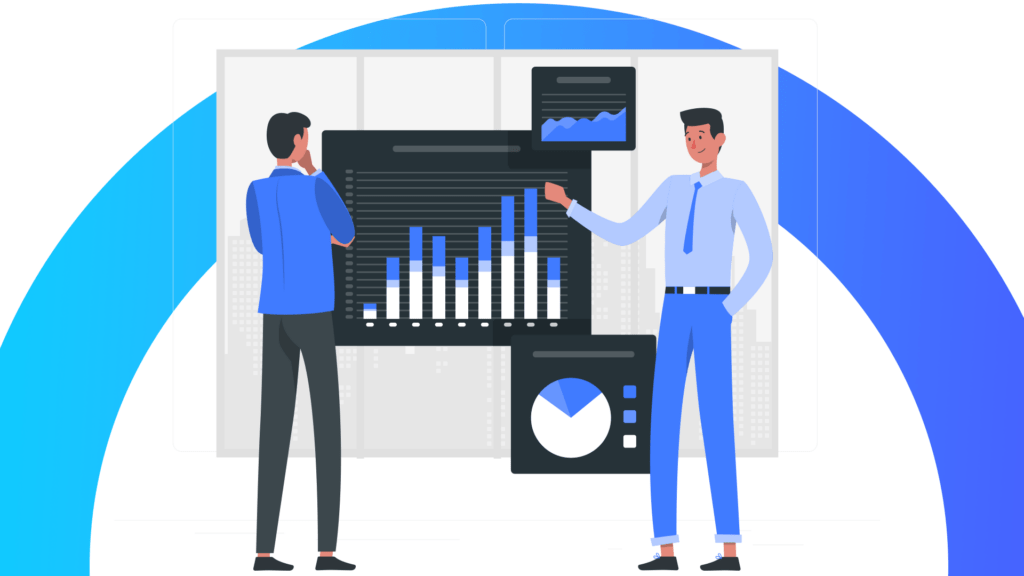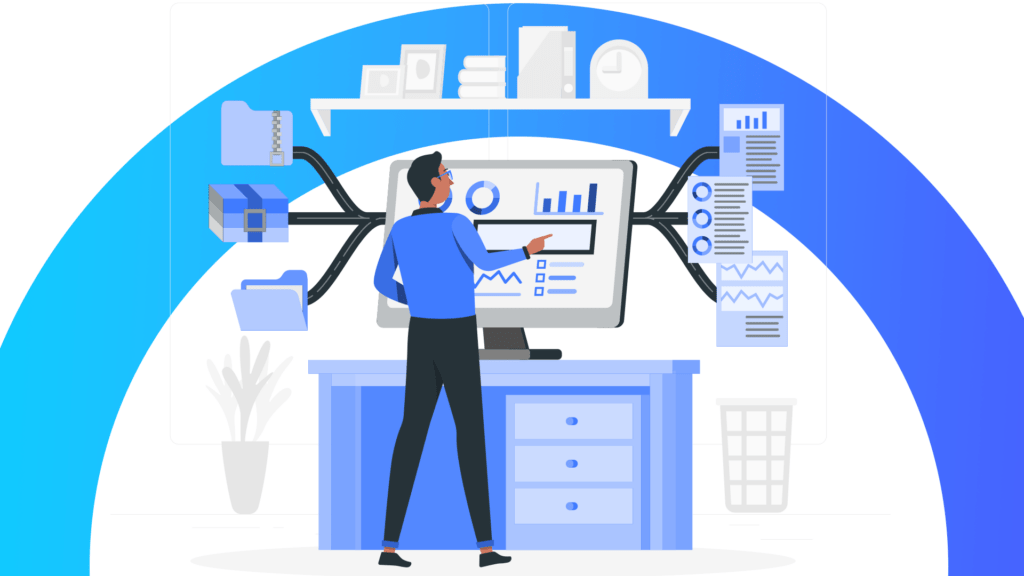Chillers are an integral part of the larger HVAC systems, that play a key role in regulating the temperature conditions of commercial space. In doing so, significant energy consumption takes place, along with huge operational and maintenance costs. Studies show that chillers consume more than 40% of the total energy used in commercial and industrial buildings. In this blog, we will explore the role a chiller optimization system plays in minimizing costs and maximizing chiller efficiency.
What is an industrial chiller?
An industrial chiller is a refrigeration system that is utilized to control the temperature of industrial spaces, machinery, and process fluids. Especially when strict operational temperatures are required, chillers play a key role in the production process. When utilized in heat-sensitive processes, thermal damage will be prevented by chillers when processing equipment. As a result, the final products are protected from any alterations due to exposure to unsuitable temperatures.
Challenges faced by users
Working as an individual component of the HVAC system, even the most efficient chiller plants are generally unable to meet the ambitious energy targets of large commercial buildings. Operational inefficiencies of chillers lead to high wastage, increased costs, and a lack of chiller optimization. Let’s explore the challenges faced by plant operators, and commercial/industrial facility owners due to the lack of chiller monitoring:
Financial leakage:
Significant energy wastage results from an inefficient chiller system, like leaks, outdated equipment, and/or wrong settings. Suboptimal operations also contribute to increased energy usage and costs, and an adverse environmental impact. The lack of chiller optimization means a building’s chiller system is running at inefficient temperatures, leading to significant financial losses.
Data deficiency:
Chiller plants experience blind spots lacking a complete picture when operating without comprehensive performance monitoring. Identifying issues becomes a challenge without access to real-time data about energy usage. Even if data is available, operators find it challenging to source valuable insights due to the unavailability of advanced analytical tools. This inability to track and understand energy consumption patterns leads to inefficiencies in operations and a lack of chiller optimization.
Manual inspection:
When chiller systems are being checked by humans, there is a great space for incorrect readings, missed chiller optimization opportunities, and oversight. This manual process of inspection and the logging of that data leads to a waste of time and human resources. Additionally, manually setting chiller temperatures causes it to fluctuate, resulting in further energy wastage and increased costs.
Reactive problem-solving:
The user only pays attention to the chiller once a significant issue has arisen. This leads to increased costs of repair and part replacement. As the issue is not foreseen, emergent purchase of parts or services incurs premium rates. In order to achieve chiller optimization, timely identification and a proactive approach are essential. Here arises the question that if manufacturers are unable to track how much energy the chiller uses, how will they minimize energy costs? This is where IIoT-based chiller optimization tools like ChilloWatt come in.
The solution? ChilloWatt Chiller Optimization System
To achieve peak operational performance, a strong chiller optimization tool that is backed by IIoT capabilities is essential for success. The challenge facing enterprises of sustaining an optimal energy efficiency level in chillers is overturned by chiller optimization tools, such as ChilloWatt.
ChilloWatt chiller optimization system is a cloud-based advisory tool that analyzes chiller performance and energy consumption. It connects to our SaaS-based data cloud platform, OmniConnect™, which provides real-time insights into chiller performance, allowing factory and building owners to make smarter, informed decisions. As a chiller optimization tool, ChilloWatt optimizes chiller systems and monitors equipment, leading to significant cost reductions.
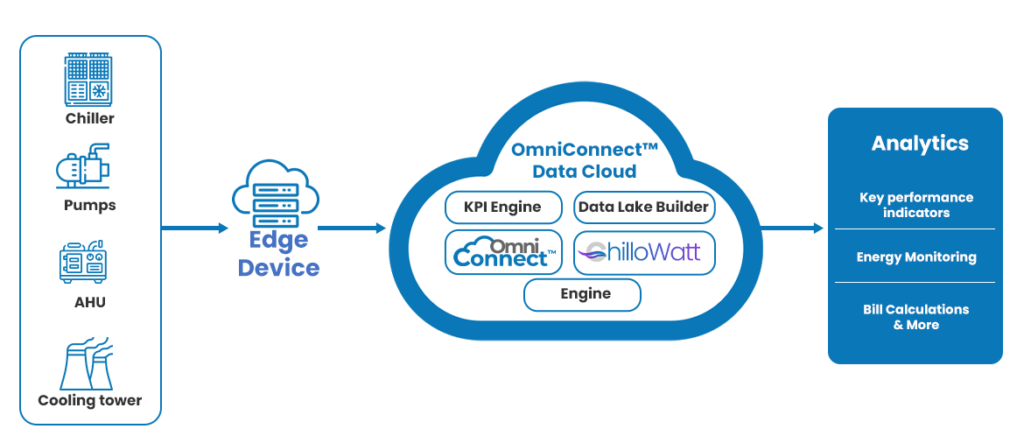
How does it work
This chiller optimization tool is integrated into OmniConnect™, where all chiller insights are visualized and optimized. Without requiring complex infrastructure or maintenance, ChilloWatt generates recommendations for chiller optimization and provides a priority index for efficient chiller selection based on comparative performance ratings.
Through its easy-to-install, plug n’ play system, ChilloWatt tackles all the challenges identified earlier to achieve chiller optimization:
Cost saving:
It proves to be very costly when chillers stop working, causing unprecedented downtimes in the production process. ChilloWatt aids users in identifying inefficient areas in the existing chiller systems. This leads to the user making cost-effective improvements, that maximize energy efficiency and chiller optimization. Efficient usage of energy leads to a significant reduction in utility costs and maximizes profitability.
Anomaly detection:
The data gathered from each chiller is used to detect any anomalies. This allows issues to be identified and addressed proactively, to avoid any unplanned downtime. Through this process, ChilloWatt chiller optimization system ensures the smooth running of operations.
Decision support:
Our comprehensive data visualization dashboards offer a depth of information. These act as an advisory aid for decision-makers to make proactive decisions regarding chiller optimization. Showing KPIs and tracking trends, the ChilloWatt chiller optimization dashboard allows users to understand issues through visual graphics, and make timely decisions.
Real-time data visibility:
The data provided by ChilloWatt chiller optimization system allows the user to communicate the right information, to the right recipient, at the right time. This enables the technicians to be equipped with all the specifications of the issue as they arrive on site.
Remote monitoring:
With ChilloWatt chiller optimization system, the user enjoys the ability to monitor various metrics, such as temperature remotely. By being able to locate any issues in real time, the maintenance team gets to work before major problems develop hindering chiller optimization.
Advances in technology are making siloed and costly chiller systems a thing of the past. Once users embrace the integration of chillers with ChilloWatt chiller optimization system, it will prove to be a wise investment. Octopus Digital offers state-of-the-art services and products to make your chiller system smart and efficient.

